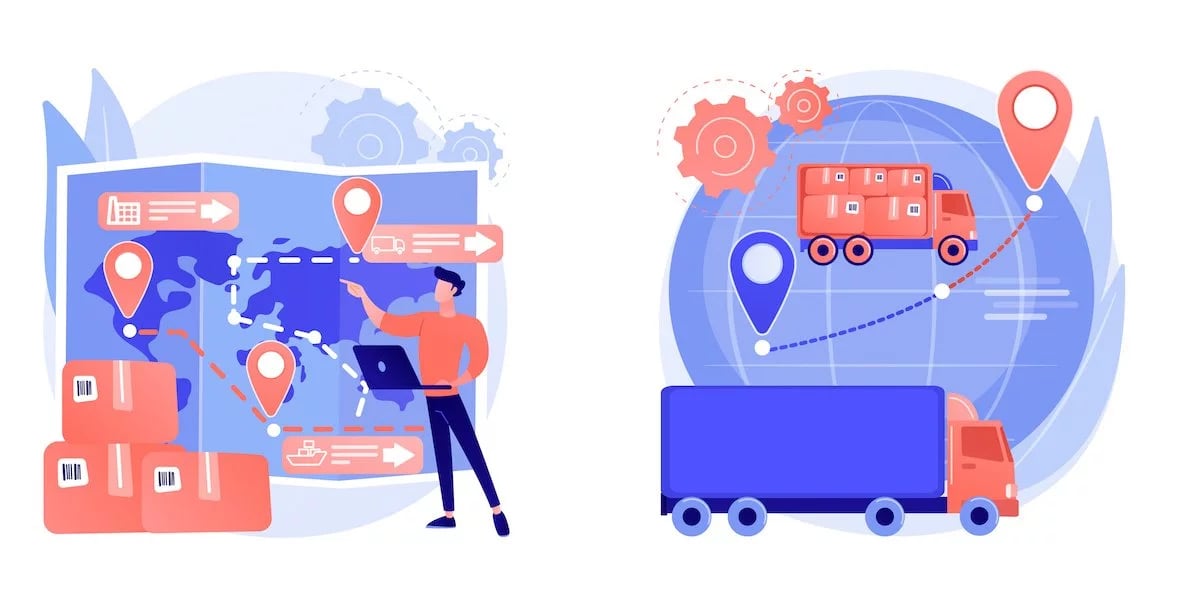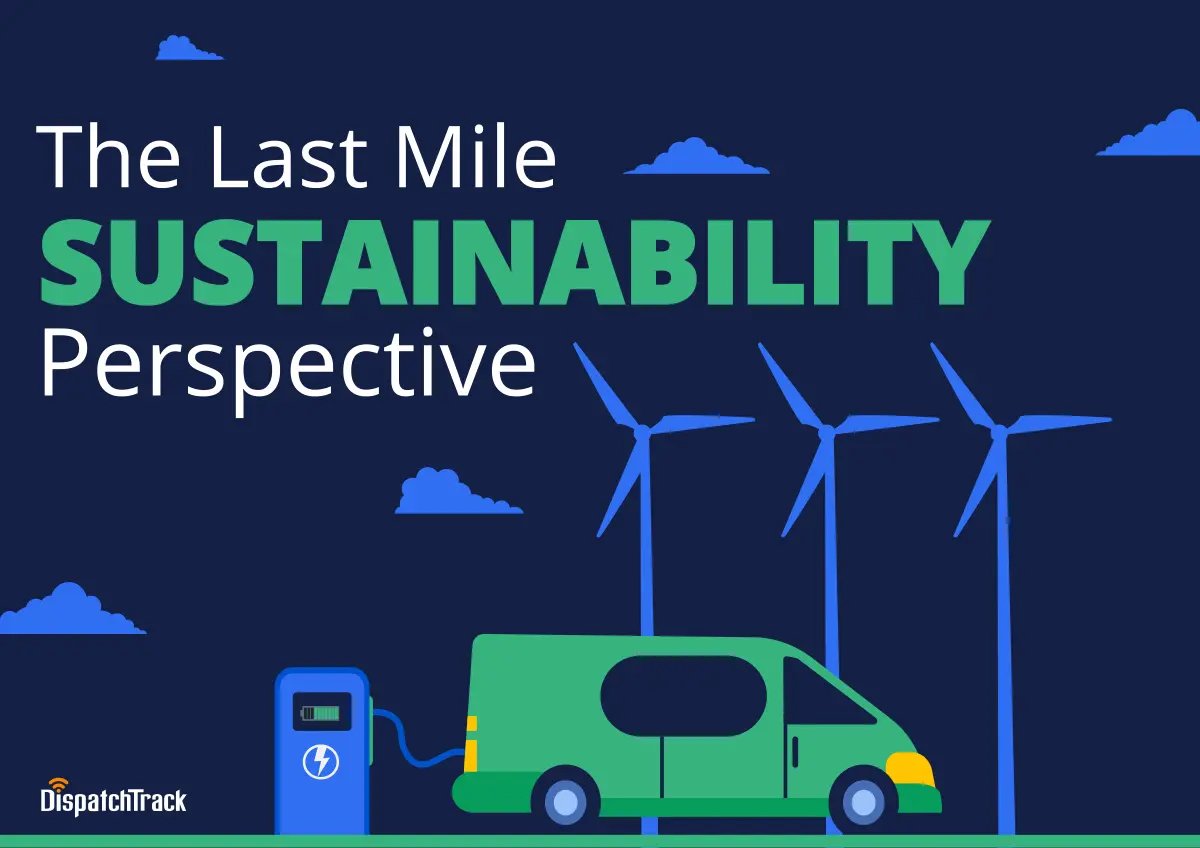6 Minute Read
Why It’s Time for Jansan Businesses to Rethink Their Delivery Tech
No one knows better than jansan distributors that it’s easy to take the little things for granted. You step into a school and you expect there to be soap and paper towels in the bathroom, you expect clean walls and floors, and you expect healthy air and a safe environment. But none of this happens on its own—it happens because someone put care into ensuring that the supplies to make that happen were available when they were needed.
 Even when you’re the one making sure the right supplies get to the right place at the right time, it’s easy to take things for granted. Delivery management tools and strategies fall under the banner of “we’ve always done it that way,” even when they’re not working anymore. That’s why so many businesses in the jansan sphere find themselves relying on legacy technologies that don’t really reflect the modern, solution-oriented mindset that modern customers have been seeking out, especially in the last few years.
Even when you’re the one making sure the right supplies get to the right place at the right time, it’s easy to take things for granted. Delivery management tools and strategies fall under the banner of “we’ve always done it that way,” even when they’re not working anymore. That’s why so many businesses in the jansan sphere find themselves relying on legacy technologies that don’t really reflect the modern, solution-oriented mindset that modern customers have been seeking out, especially in the last few years.
Of course, truly problematic delivery processes—those that result in late deliveries, wasteful practices, and angry customers—usually don’t stay invisible to everyone. In fact, they’re probably a thorn in the side of more than one department head. The question is: are the disruptions caused by existing processes worth the headaches that can come with change management and adopting new solutions?
Here are a few reasons why upgrading your delivery technology is worth it:
Jansan Customer Expectations Are Changing
It’s almost a cliche at this point to talk about how the consumer delivery experience is shifting buyer expectations in business to business contexts as well. But when it comes to jansan, there are at least two big changes in the way consumers operate that you need to take into account:
- There’s a stronger preference for online ordering than ever before
- Product mixes are less stable and more changeable than they have been in the past
These might not look like earth-shattering developments, but when you’ve been delivering the same mix of products to the same customers on the same days for years, it can be difficult to predict the impacts of changing up product mixes in the delivery process. It may change which distribution center you need to deliver from, for instance, which can throw an entire run into disarray if you don’t have the ability to quickly and easily adjust routes.
Online ordering doesn’t necessarily present the same challenge—on the contrary, it presents an opportunity for finding new efficiencies and potential optimizations. If the orders that you’re fielding are online anyway, you can automate the process of getting that data into your last mile planning system, potentially speeding up the cycle time between order-in and delivery.
Pricing Competition Is Fiercer Than Ever
Jansan businesses often provide comprehensive solutions for their customers, going above and beyond simply selling cleaning supplies or toilet paper. In spite of this fact, most businesses find themselves competing on price when it comes to finding and retaining customers. But as fuel prices remain volatile and inflation impacts the costs of everyday goods, how are delivery organizations supposed to keep their own costs in check to enable low prices to their customers?
This is exactly where modern, cloud-based delivery management technology can come in. Compared to manual delivery planning or legacy software, today’s delivery technology can help reduce operational costs in a host of different ways:
- Decreased fuel costs via more efficient routes (i.e. minimizing the number of miles driven per stop)
- Decreased costs associated with phone time with customers via automated delivery notifications
- Improved exception management on the day of delivery via real-time visibility, which can empower businesses to spot potential disruptions before they happen and take action to prevent them
- More accurate delivery costing to ensure that you can see which deliveries are actually profitable
- Improved cost efficiencies across the entire supply chain through more effective integration
- Reduced labor, IT, and consulting costs for tasks like planning new delivery routes that have historically been incredibly time, labor, and resource intensive.
This is just a sampling of some of the ways that you can decrease costs using the right technology—but they all ultimately amount to the same thing: you can become more efficient across your delivery operation and pass the decreased overall costs onto your customers.
Strategic Planning Can Help Streamline Deliveries
We alluded above to the fact that modern technology can help you speed up the previously tedious process of planning delivery routes, thereby saving you time and potential costs (e.g. if you would normally have to bring in outside consultants). But the impacts of being able to build out not just routes but entire strategic plans quickly and easily can have wide-ranging operational benefits.
Where are we drawing the line between routes and plans? For our purposes, a route encompasses the actual delivery schedule that a driver traverses on a given day of the week—whereas a plan might be the set of baseline delivery schedules that you have for each day of the week or for different periods during the year (e.g. a separate baseline plan for peak season deliveries). The plan shouldn’t change much week to week, whereas your daily routes should ideally account for differences in order volumes, customer requests, etc.
When the route planning process takes weeks or months of careful calculations, the idea of updating your plans more than a few times per year seems unpalatable and potentially even unproductive. But working with baseline plans that don’t reflect current market and business conditions can result in inefficient deliveries and a lack of flexibility when it comes to taking on new clients or adapting to new needs from your existing ones.
It’s not hard to imagine how much more cost- and time-efficient your delivery processes would be if these limitations suddenly vanished and you could magically create strategic plans within a matter of minutes. And as it happens, that’s exactly what carefully architected SaaS solutions can offer. When you’re able to scale up to access significant processing power as needed, you can generate arbitrarily large and complex routes—routes that account for customer time window and day of week requests, historical traffic patterns, service times, and much more—in a matter of seconds.
This means that you can create a new strategic plan, or run a what-if scenario to test a potential plan, at the drop of a hat. Whenever there’s a meaningful change in your customer roster or your delivery conditions, you can adjust your baseline plans to ensure that you’re still delivering in the most efficient way. The result is that jansan businesses are able to be more agile than ever before when it comes to meeting customer needs in an ever-changing landscape.
Legacy Technology Doesn’t Cut It Anymore
If there’s been a running theme to this article so far, it’s this: modern technology gives jansan businesses the ability to update their processes to smarter, more efficient, and more cost effective across the board. When it comes to delivery, the ability to be agile and adaptable means that you can roll out better plans in less time, and you can execute on those plans more easily—the end result being that you delight your customers and maintain strong relationships with. Without the flexibility and adaptability to make that happen, the challenges that are facing jansan businesses are only going to keep mounting.
All of which brings us precisely to the biggest reason why it’s time for jansan businesses to rethink their delivery technology: legacy systems simply can’t offer the capabilities you need to keep up with changing customer needs and rising prices. The modern market for janitorial supplies, sanitation products, and similar goods is more complex and faster-paced than ever, which means the smarter, faster, and more efficient delivery management technology is non-negotiable.
By upgrading your delivery technology, you’re doing more than making life easier for dispatchers, managers, and drivers—you’re powering the first steps in a digital transformation that can help you reimagine the delivery experience you offer to customers. The trick is finding technology that actually offers what legacy technology fails to deliver on: agile, connected, and intelligent functionality built to cut through the complexity.
You may also like
Subscribe now
for a weekly blog digest containing growth tips, industry updates, and product announcements!
